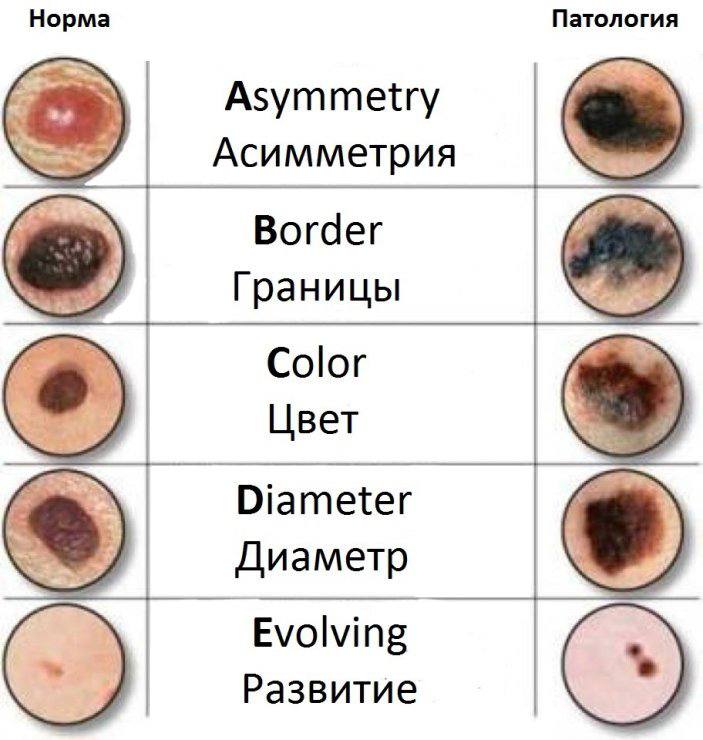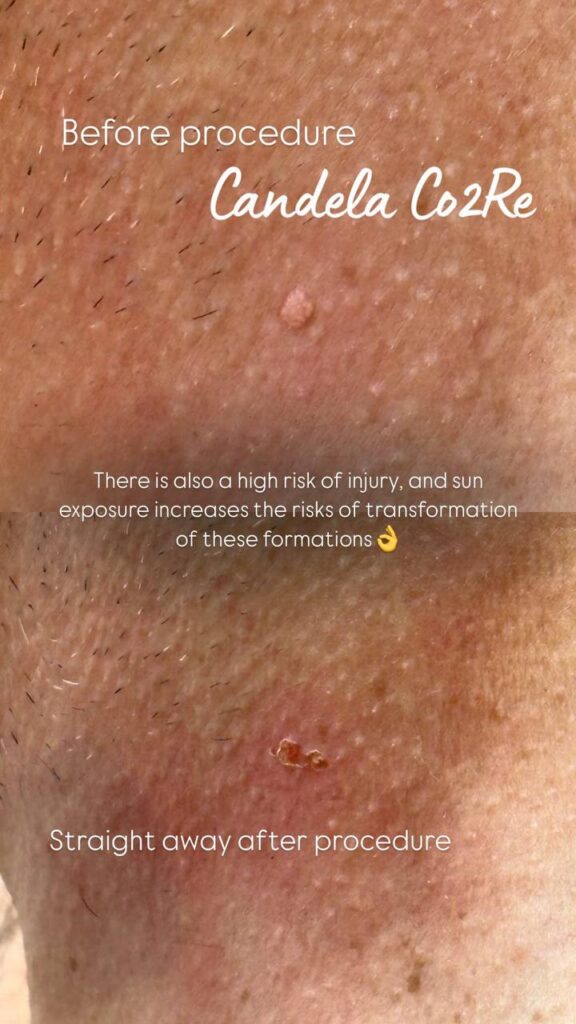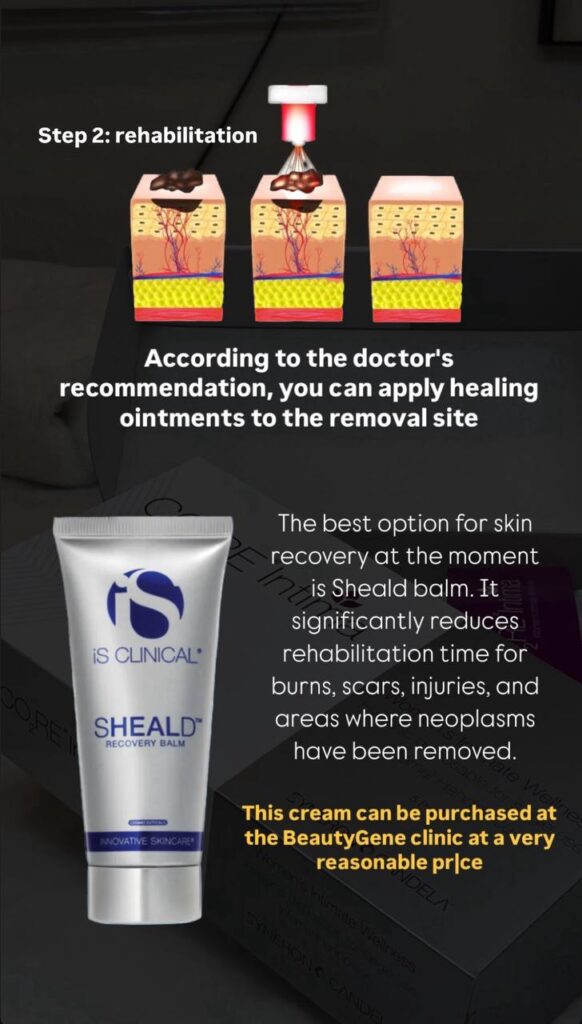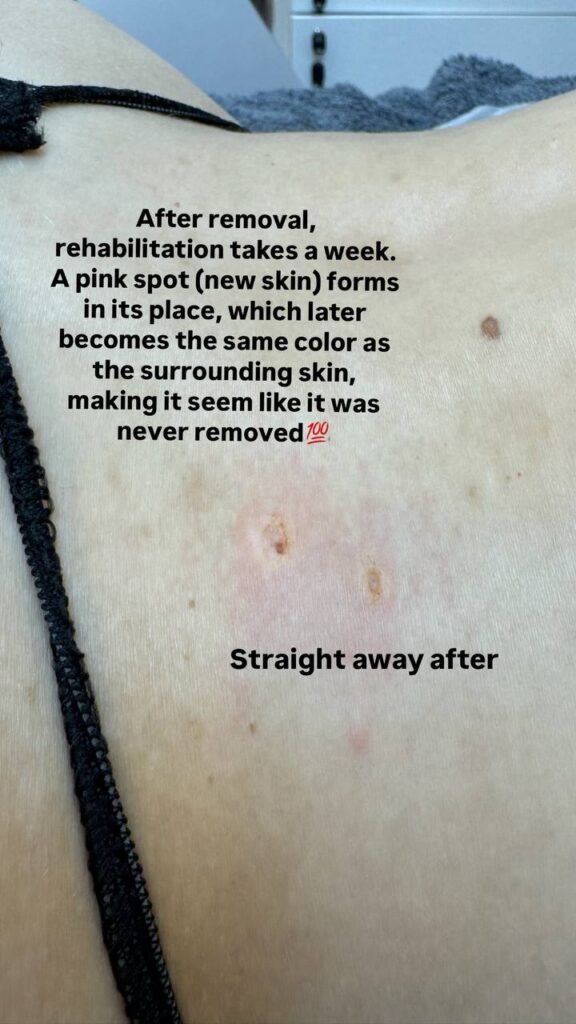- +442079981380
- info@beautygene.clinic
- Tue - Sun: 10:00 - 20:00
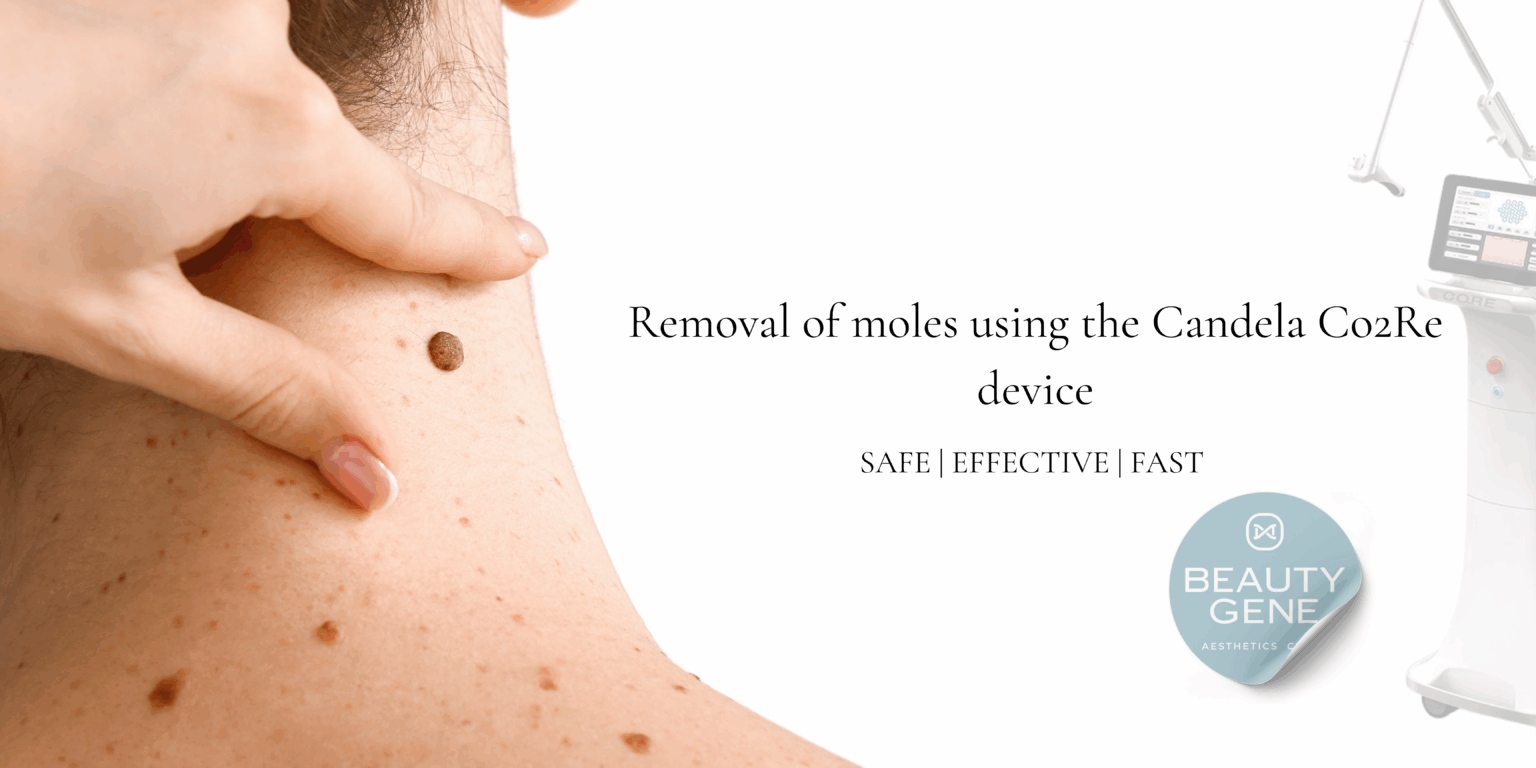
The latest Candela CO2RE laser, which is ideal for such procedures, is used for the careful and delicate removal of benign skin growths.
Laser removal of growths is less traumatic and provides optimal results. Your skin will fully recover within a few days. This is a quick, well-tolerated procedure that is used quite often due to its good cosmetic results. Usually, benign growths such as warts, moles, keratomas, papillomas, and haemangiomas are removed with a laser.
Laser removal of benign growths gives amazing results, as in most cases it leaves no traces or scars, and in other cases only minor changes are observed.
This is especially important if the growth is removed from the face or neck. Laser removal of growths is a very quick procedure that in most cases does not require painkillers.
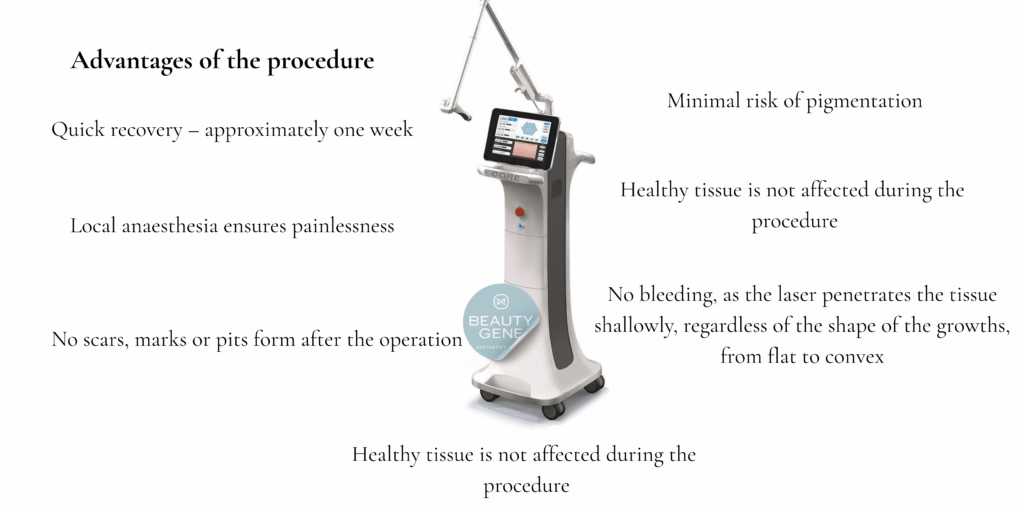
Procedure
A small amount of local anaesthetic is applied to the area to be treated or administered by injection. Local anaesthesia will numb the area, so the laser beam will be painless and will not cause discomfort throughout the procedure.
The laser beam focuses precisely on the area to be treated, as it causes water to be absorbed by the cells. The absorbed energy causes further evaporation of the cells. On average, the laser removes 30 to 50 microns of tissue at a time. The Candela CO2RE device provides the most precise control when treating tissue.
After the procedure
After laser removal of a neoplasm, it is necessary to protect the skin from sunlight, or more precisely, from ultraviolet rays. This means that even on a cloudy day, the skin needs high-quality protection. It is very important to protect this area from ultraviolet rays for at least 2 months.
This is important for exposed parts of the body, and especially important for the face and neck. You should also avoid using cosmetics until the wound has completely healed.
Facial skin recovery usually takes about 5-7 days or slightly longer. Recovery is very similar to scar healing: at first it looks like a wound, then after a week it heals and turns pink, and then gradually acquires a colour that matches your natural skin tone.
Sometimes the surface of the treated skin may be uneven compared to the surrounding skin, or it may be slightly raised above the skin surface or slightly hollow, but this will normalise over time. Do not rub or scratch the treated area, as this may cause local inflammation and infection.
Why should a mole be removed?
We are all at risk of a mole turning into a malignant tumour, or melanoma. Moles that have started to grow rapidly and increase in size, newly formed moles, or moles that are often injured by shaving or clothing and bleed require special attention.
Signs that indicate a high probability of a mole becoming malignant include
A – asymmetry;
B – border (it may become blurred or fuzzy);
C – colour (changes in the form of dark ‘speckles’ or general darkening of the nevus);
R – size (especially if the mole has changed in size in adulthood);
D – dynamics (the appearance of scabs, flaking, cracks, bleeding).
